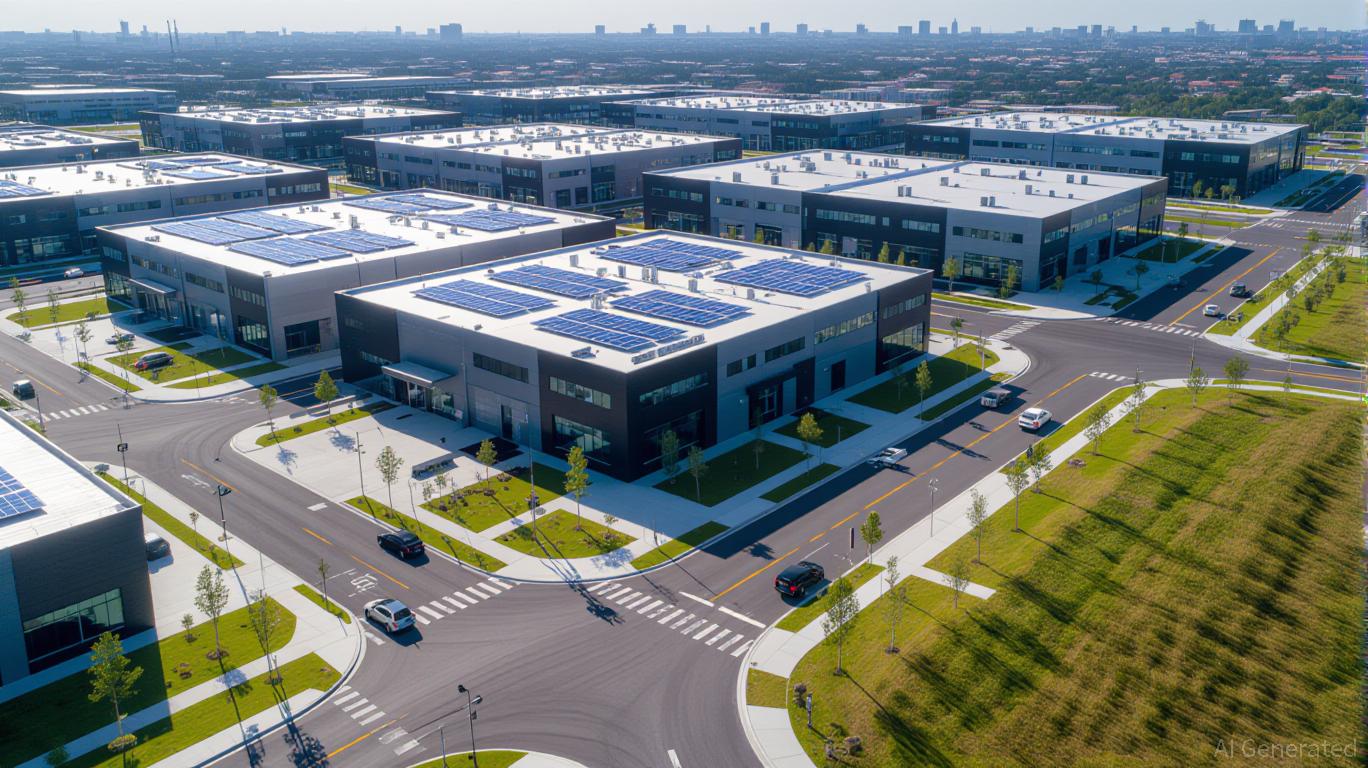As the U.S. industrial real estate sector evolves, secondary markets such as Webster, New York, are quickly becoming key drivers of expansion. This shift is fueled not by speculation, but by intentional government policies and infrastructure spending that tap into the value of previously overlooked properties. Central to this narrative is the
Xerox
campus—a 300-acre former industrial site set for transformation through a blend of local grants, updated zoning, and collaborative partnerships. Webster’s experience serves as a prime example for investors, illustrating how public sector involvement can spark significant value in industrial real estate.
Infrastructure as a Catalyst: Grants Paving the Way
Webster’s revitalization took off with the awarding of a
FAST NY Grant
, granted in August 2025 to the Webster Economic Development Alliance (WEDA). This grant is earmarked for essential upgrades at the Xerox site, such as rebuilding roads, expanding sewer systems, and planning for electrical needs
according to project details
. These improvements go beyond routine upkeep—they lay the groundwork for converting a brownfield into a ready-to-develop location for advanced industries. By resolving infrastructure and utility challenges, the grant lowers barriers for prospective tenants, positioning the site to compete with top-tier industrial areas.
The benefits of these grants reach far beyond the initial construction phase. For example, the FAST NY initiative,
which has allocated over $283 million
to 34 locations in Upstate New York since it began, is intended to draw in high-tech sectors such as semiconductor manufacturing and renewable energy. These industries require strong infrastructure, and Webster’s upgrades make it a compelling alternative to pricier coastal regions. Consequently, the Xerox campus is
projected to generate over one million square feet
of industrial facilities by 2025, highlighting the scale of the opportunity.
Zoning Innovations: Turning Brownfields into Bluefields
Zoning adjustments have played a crucial role as well. Conventional industrial zoning often limits mixed-use projects, but Webster’s changes—part of the Reimagine Webster Initiative—have redefined parts of the Xerox property to support advanced manufacturing, logistics, and even residential uses
according to municipal plans
. This adaptability is vital for bringing in a wide variety of occupants, from single-tenant distribution centers to R&D operations.
One standout project is the Community Access Project, which
received $2.041 million in state assistance
and $500,000 in federal support to enhance roads, walking paths, and public areas around the 88-acre Xerox property. These improvements are more than cosmetic—they boost accessibility and safety, both of which are key factors in a site’s attractiveness. By weaving the campus into the larger community, Webster is fostering a “bluefield” approach—revitalizing underused spaces through thoughtful planning rather than expanding into untouched land.
Measuring Impact: Real Estate Trends and Economic Ripple Effects
The positive outcomes of these strategies are becoming evident. As of October 2025,
the median sale price in Webster stands at $327,000
, indicating steady growth and investor trust. While this figure reflects the residential market, the industrial sector is experiencing similar momentum. The Xerox campus’s proximity to the
project expected to create 250 jobs
—a $650 million fairlife production plant—further boosts its attractiveness. Such major developments tend to draw related suppliers and service providers, increasing demand for industrial properties.
Additionally,
the state's Brownfield Opportunity Area program
is being used to tackle environmental cleanup at the Xerox site. By providing tax incentives and simplifying the permitting process, New York is easing the financial and regulatory challenges that often hinder brownfield projects. This strategy not only speeds up redevelopment but also increases the site’s long-term value by reducing contamination risks.
Investor Perspective: Managing Risk and Looking Forward
For those investing in industrial real estate, Webster’s story marks a significant shift. In the past, secondary markets were often seen as risky due to limited infrastructure and uncertain regulations. Now, targeted efforts like FAST NY grants and zoning updates are turning these weaknesses into strengths. The Xerox campus is a case in point: once considered unsuitable, it is now attracting fast-growing industries, thanks to public-private collaborations that help shoulder initial costs.
Moving forward, Webster’s continued progress will depend on sustaining this momentum.
Continued investment in transportation networks
—such as the Sandbar Waterfront Revitalization Project, which has secured $4.5 million since 2016—will be essential for keeping the area competitive. Furthermore,
the alignment of local initiatives with state-level goals
, like Governor Hochul’s focus on sustainable economic development, ensures Webster remains a priority for future funding.
Conclusion
Webster, NY, is not an exception but a sign of a larger movement: intentionally increasing the value of industrial real estate through infrastructure and policy. The redevelopment of the Xerox campus shows that with the right combination of funding, flexible zoning, and strategic planning, even the most challenging sites can become engines for economic growth. For investors, the message is clear: secondary markets have moved to the forefront, where smart public investment and private innovation combine to reveal value that was once hidden.
